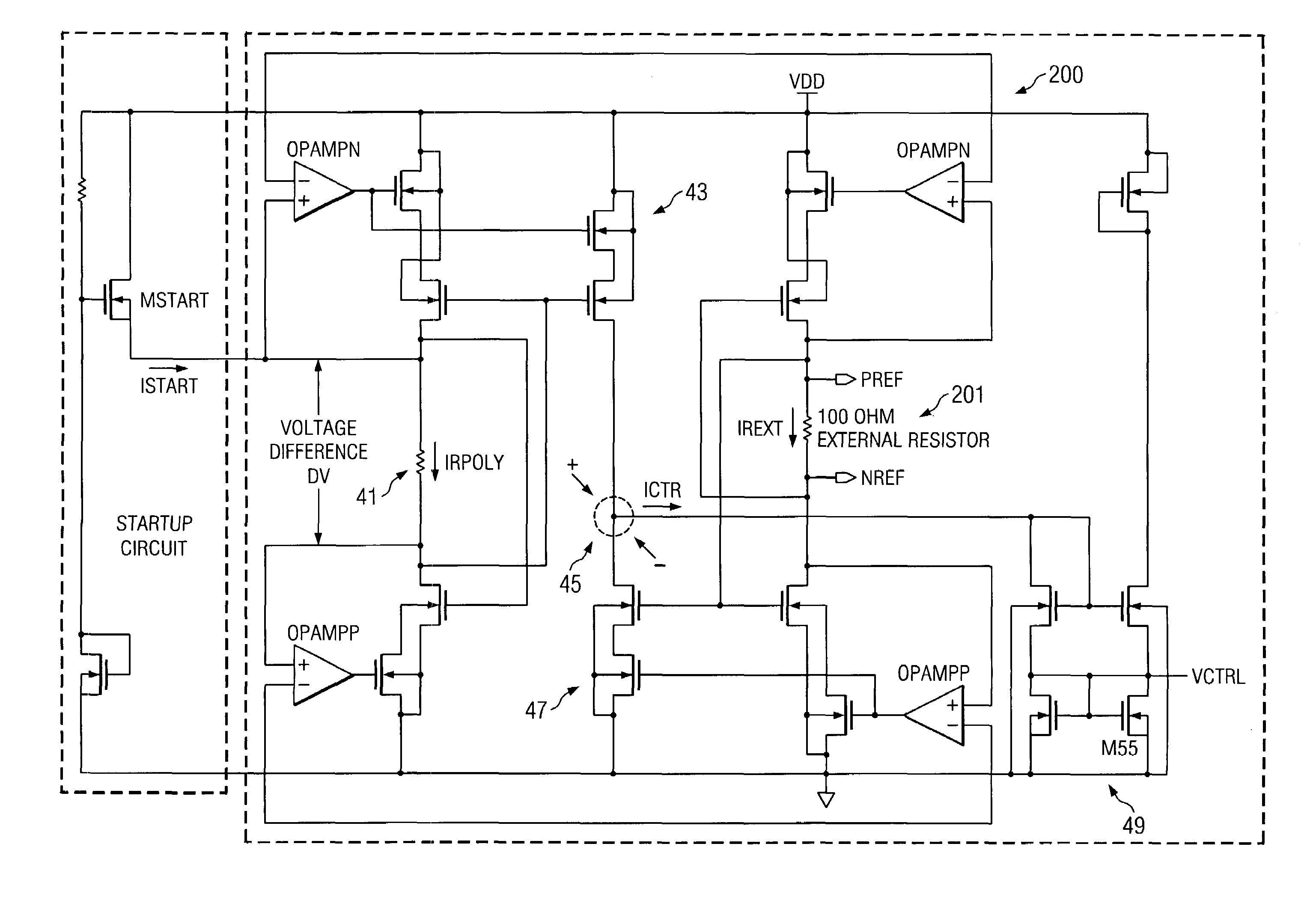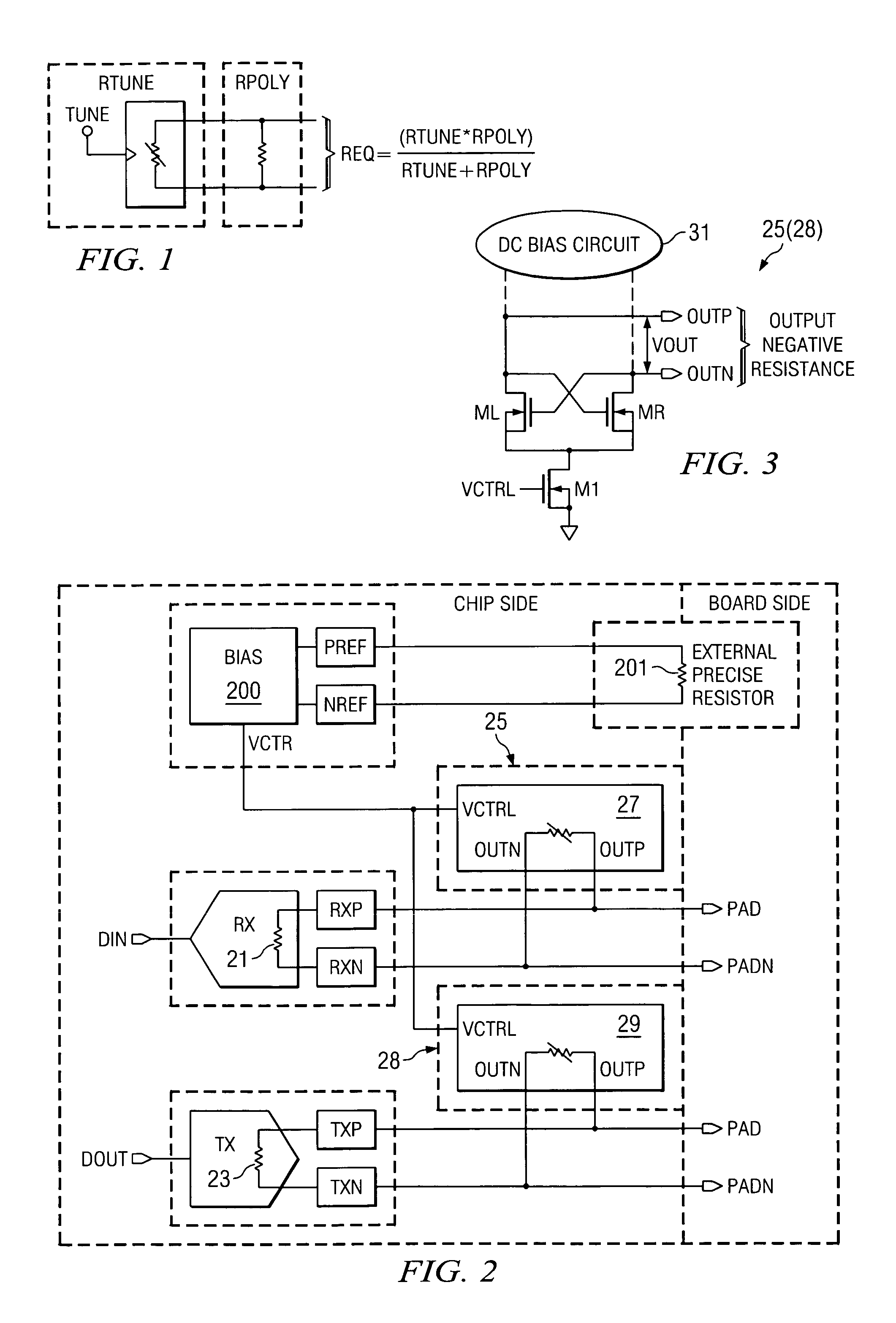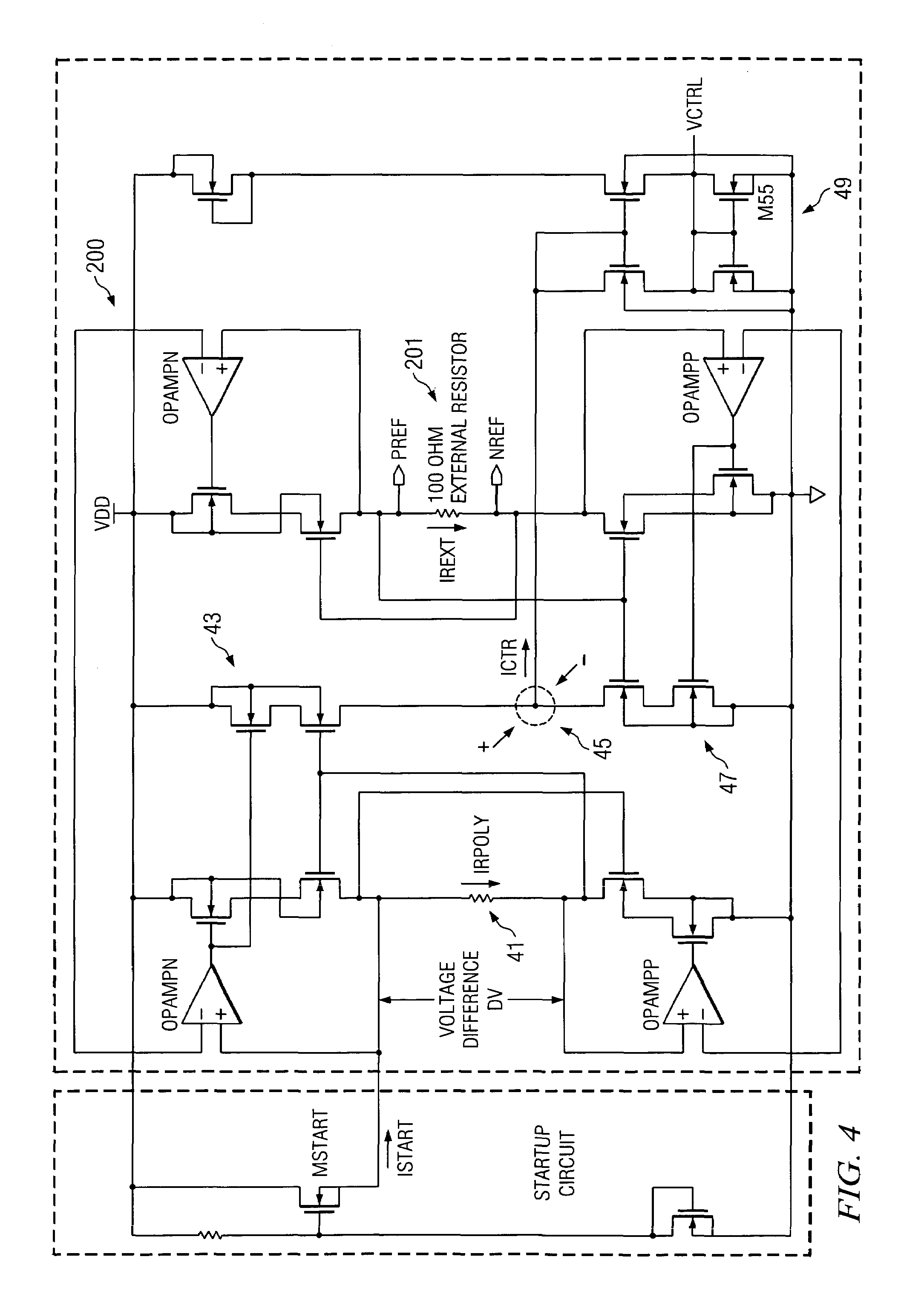Using active circuits to compensate for resistance variations in embedded poly resistors
a poly-resistor and active circuit technology, applied in the field of semiconductor integrated circuits, can solve the problem that the type of variation is not acceptable in many applications that require precision resistors
- Summary
- Abstract
- Description
- Claims
- Application Information
AI Technical Summary
Benefits of technology
Problems solved by technology
Method used
Image
Examples
Embodiment Construction
[0009]FIG. 1 illustrates a general approach to compensate for variations in the resistance of an unsalicided poly resistor, such as produced by a conventional CMOS process. The poly resistor (Rpoly) of FIG. 1 can exhibit an actual resistance that varies + / −30% or more from the nominal value of the poly resistor, for example because of PVT (process, voltage, temperature) variations. This situation is well known in the art. According to the invention, a tunable compensating resistance (Rtune) is provided in parallel with the target poly resistor (Rpoly) which results in a tunable equivalent resistance (Req) defined as shown in FIG. 1. More specifically, the equivalent resistance is given by
[0010]Req=Rtune×RpolyRtune+Rpoly(1)
If the maximum variation of the poly resistor Rpoly is known, then the Rpoly can be sized, in the typical PVT conditions, lower than the desired resistance Req, so that:
[0011]Rpoly=Req-(dRpolyRpoly)❘max×Rpoly(2)
[0012]Because Rpoly is less than Req, the value of t...
PUM
 Login to View More
Login to View More Abstract
Description
Claims
Application Information
 Login to View More
Login to View More - R&D
- Intellectual Property
- Life Sciences
- Materials
- Tech Scout
- Unparalleled Data Quality
- Higher Quality Content
- 60% Fewer Hallucinations
Browse by: Latest US Patents, China's latest patents, Technical Efficacy Thesaurus, Application Domain, Technology Topic, Popular Technical Reports.
© 2025 PatSnap. All rights reserved.Legal|Privacy policy|Modern Slavery Act Transparency Statement|Sitemap|About US| Contact US: help@patsnap.com



